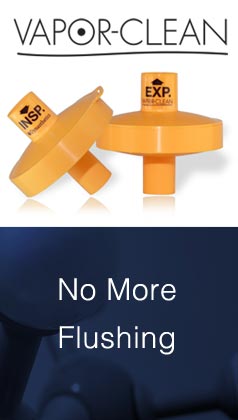I certainly do plan on following manufacturer recommendations, but I wonder if it even matters. I have seen it done both ways at various institutions. Biomed at my current institution disagrees with the manufacturer and the manufacturer cannot seem to give me any data/explanation to support their recommendations. Also I am not sure that a 40 minute flush at 15L/min would be enough to desiccate an absorber and render it ineffective.
On one hand if you change the canister/absorber before the flush, you can flush the machine without a contaminated CO2 absorber continually releasing retained volatile anesthetics into the circuit. However, the new absorbent may accumulate and retain additional volatile during the flushing process.
Conversely, if the canister and absorber are changed at the end of the flush you can be sure the new absorbent has no retained volatile. However, I would think that flushing the machine with contaminated absorbent is inefficient.
Probably as propadope suggested - it may be best to empty any old absorber from the CO2 canister prior. Then put the old, but now empty canister on the machine and start the flush. This would prevent old absorbent front continually releasing any retained volatile into the circuit. Once the flush is finished, put a new canister with fresh absorber on the machine.
